 No one comes to a solicitation meeting as prepared as you. As a Mission Controller, you will have done your homework on all fronts and it’ll show.
No one comes to a solicitation meeting as prepared as you. As a Mission Controller, you will have done your homework on all fronts and it’ll show.
You’ll know a lot about your prospect and you’ll be conversant about your organization. You’ll have taken into account as much information as possible before settling on an amount to request.
Making an Impact as a Mission Controller
As the Analytic Introvert, plans and methods inspire you. You admire “how” your organization accomplishes great work as much as “why” it does it. You excel at setting up systems, which makes you superb at following up and following through. Donors won’t fall through the cracks when you’re involved.
As an introvert, you’ll be most comfortable reaching out to a prospect in writing first and that’s fine. Don’t let anyone tell you phone is better – it’s just another tool. Use email or a formal letter depending on the relationship. You can even text if that feels right though, as a Mission Controller, you’ll probably find texts insufficient.
Perhaps your greatest strength is your ability to observe. You listen intently and ask great follow up questions, engaging your prospects and making them feel heard.
 One caution, you can get a bit mechanical and apply systems where customization is key. Every donor is unique and deserves personalized attention – including writing all your correspondence from scratch.
One caution, you can get a bit mechanical and apply systems where customization is key. Every donor is unique and deserves personalized attention – including writing all your correspondence from scratch.
Don’t let efficiency get in the way of good relationship-building.

Asking Matters is the first time I’ve ever seen fundraising training address my introverted, detail-oriented personality (Mission Controller), though I have a Masters degree in Nonprofit Management and have worked in nonprofits for 20 years. Prior to Asking Matters, I’ve always felt I needed to be a Rainmaker to be a fundraiser, a shoe that just doesn’t fit and I can’t wear well.

Wendy Kang, Executive Director
Saving Grace, Winchester, Oregon
Your Secondary Asking Style Makes a Difference
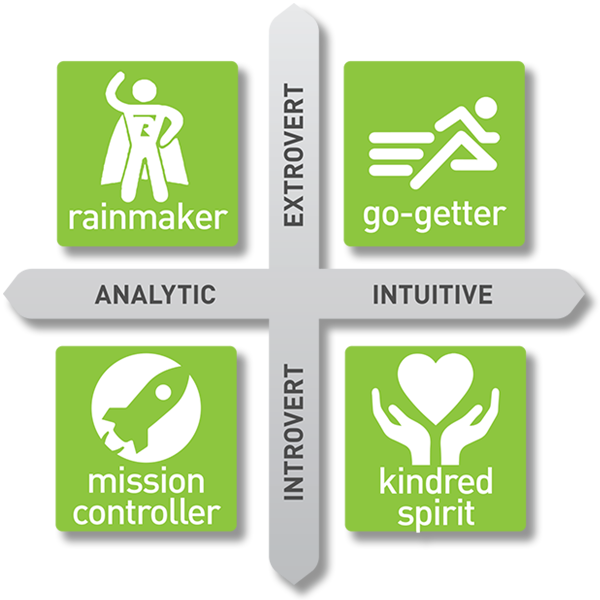 If your Secondary Asking Style is Rainmaker, the other analytic Style, you come uber-prepared with all the facts and figures, outcomes and strategies.
If your Secondary Asking Style is Rainmaker, the other analytic Style, you come uber-prepared with all the facts and figures, outcomes and strategies.
But visionary and personal stories are important as well, so take the time to meet with program staff or participants so you can share their experiences with your prospects.
If your Secondary Asking Style is Kindred Spirit, you’re particularly introverted and have a strong tendency to listen rather than speak.
While generally this is an asset as it’s more important to learn from the prospect than it is to talk about the organization, sometimes you’re too cautious about asking questions and probing. Most people enjoy being asked about themselves.
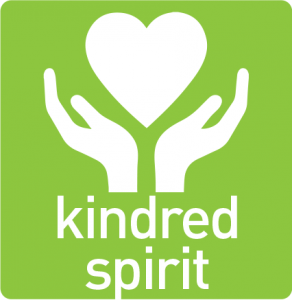 No one is more thoughtful than a Kindred Spirit. Kindred Spirits are always wondering what they can do for others and how they can be helpful.
No one is more thoughtful than a Kindred Spirit. Kindred Spirits are always wondering what they can do for others and how they can be helpful.
Such a strong focus on others makes a lasting impression on donors.
Making an Impact as a Kindred Spirit
As the Intuitive Introvert, for you everything comes from the heart. It’s all about what moves you. Why you care personally. How individuals are impacted by your organization.
Meeting new people can be a challenge, but once you’ve established that initial contact you’re warm and engaged, and you naturally build strong relationships. This makes you invaluable to your organization as the key to fundraising is building relationships.
As an introvert, you’ll be most comfortable reaching out to a prospect in writing first and that’s fine. Don’t let anyone tell you phone is better – it’s just another tool. Use email or a formal letter depending on the relationship, or even text if that feels right.
 One caution, it’s easy for you to take things personally so always remember you’re only the messenger.
One caution, it’s easy for you to take things personally so always remember you’re only the messenger.
Whether someone makes a gift or not is no reflection on you, but rather a reflection of where the prospect is philanthropically at that time.

I’m great at building and maintaining relationships, but I can’t remember dates, budgets, or stats to save my life! It wasn’t until I learned I was a Kindred Spirit that I understood I don’t have to be everything to be great at my job and make an impact. This has led to much less stress which means I’m more present, confident, and authentic with donors and prospects.

Sarah Janzen, Major Gift Officer
California Academy of Sciences, San Francisco
Your Secondary Asking Style Makes a Difference
 If your Secondary Asking Style is Go-Getter, the other intuitive Style, your intuitive side dominates. You talk from the gut about what moves you. You share your personal stories and those of program participants.
If your Secondary Asking Style is Go-Getter, the other intuitive Style, your intuitive side dominates. You talk from the gut about what moves you. You share your personal stories and those of program participants.
For you facts and figures are of less concern, but some donors will be moved by them. Always be sure to have the basic facts under your belt.
If your Secondary Asking Style is Mission Controller, you’re particularly introverted and have a tendency to listen rather than speak.
While generally this is an asset as it’s much more important to learn from the prospect than it is to talk about the organization, sometimes you’re too cautious about asking questions and probing. Most people enjoy being asked about themselves.
 We all wish we had your social skills. Your high energy and ease in meeting new people make you a great fundraiser. And your comfort in thinking outside the box lets you see the opportunity in every situation.
We all wish we had your social skills. Your high energy and ease in meeting new people make you a great fundraiser. And your comfort in thinking outside the box lets you see the opportunity in every situation.
Think Steve Jobs and Pablo Picasso!
Making an Impact as a Go-Getter
As the Intuitive Extrovert, for you everything is about possibility. What can we accomplish together? What could the world be like? What role can we play in that?
You’ve got a natural comfort meeting new people, and you’re driven to learn about them and what makes them tick. This makes you invaluable to your organization as the newer, lesser known prospects can be daunting to others.
As an in-the-moment kind of person, you’ll most likely reach out to set up the meeting by phone when the mood strikes. You’re comfortable picking up the phone out of the blue – something Mission Controllers and Kindred Spirits are less likely to do.
 One caution, a little practice and preparation go a long way. As comfortable as you are winging it, take the time to study up on your prospect and sketch out how you’d like the solicitation meeting to unfold.
One caution, a little practice and preparation go a long way. As comfortable as you are winging it, take the time to study up on your prospect and sketch out how you’d like the solicitation meeting to unfold.
And practice your case for support. Though words come easily to you, you can free associate and veer off message.

As a Go Getter, I enjoy expressing my feelings but have learned not everyone else does. By understanding the Asking Styles, I can earn trust quickly with the donor and make them more comfortable. This opens up the space for more meaningful conversations. More meaningful conversations lead to larger gifts that donors are excited to make.

Joe Tumulo, Fundraising Trainer and Coach
Willows Grove, PA
Your Secondary Asking Style Makes a Difference
 If your Secondary Asking Style is Kindred Spirit, your intuitive side dominates. You talk from the gut about what moves you. You share your passion and stories of what can be accomplished.
If your Secondary Asking Style is Kindred Spirit, your intuitive side dominates. You talk from the gut about what moves you. You share your passion and stories of what can be accomplished.
For you facts and figures are of less concern, but some donors will be moved by them. Always be sure to have the basic facts under your belt.
If your Secondary Asking Style is Rainmaker, the other extroverted Style, you’re especially comfortable with new prospects.
But watch out: Go-Getter/Rainmakers have a tendency to monopolize a conversation, especially if they’re soliciting introverts. Make sure to leave room for your prospects to talk 50% of the time.
Why do we ask for an exact amount?
When you meet with a prospective donor about a gift, they are expecting you to ask for an amount. How often does a donor say, “I know you have something in mind,” “What did you want to ask me for?,” or, even, “How can I help?”
The donor assumes you have something specific to ask for because you set up the meeting. If you are clear with the donor in advance, then the donor is expecting you to ask.
What if you say, “would you consider a gift to the Settlement House”? The phrase the donor hears is “a gift,” which translates to them as “any gift.”
It sends the message that any gift is a good gift.
 But when you ask for $5,000 to the Settlement House, then the donor knows you thought about asking them for that specific amount. It means you thought about their capacity, past gifts, relationship with the organization, what we’re trying to accomplish, how they can help, and what their peers give.
But when you ask for $5,000 to the Settlement House, then the donor knows you thought about asking them for that specific amount. It means you thought about their capacity, past gifts, relationship with the organization, what we’re trying to accomplish, how they can help, and what their peers give.
You’re telegraphing an awful lot by asking for something specific. It makes an impact on the donor, on the way you say it, and the way you come across to the donor when asking for that amount. It means this amount is important, and your gift will be meaningful.
What holds you back?
Often, you might be afraid of asking the donor for too much. Other times, you may be worried about asking for too little, or not knowing what to ask for at all. And for many of us, it’s just awkward to ask a donor for a gift, no matter the amount.
It’s impossible to hit the nail on the head each time. We don’t have all the facts all the time, and we don’t know what the donor is capable or interested in contributing until we get in the meeting and make the ask.
If these things aren’t holding you back, then it may be something else. Is it not the right time to ask? Are you not the right person to make this ask? Do you need someone as a partner to go with you?
Often these three items are at the root of the four main concerns fundraisers have when asking. Remember – you and the donor are both on the same side. You both care about the cause and want to move the organization forward.
 Rest assured, you’ll almost never hear a categorical no. Why would the donor meet just to tell you no when you’ve made your intentions clear?
Rest assured, you’ll almost never hear a categorical no. Why would the donor meet just to tell you no when you’ve made your intentions clear?
It’s okay to negotiate. This doesn’t mean you didn’t ask for the right amount, it just means the donor is comfortable at a different level which can be for any number of reasons.
Always remember it’s not about you. You’re only the messenger. Whatever response you get is not a reflection on you, but on the donor, where they are at, and their current relationship to the organization.
Watch my 10-minute video training to learn the power of asking for an exact amount:
Want to watch more in-depth fundraising videos like this? Access all of the video trainings and resources available at Asking Matter by signing up for a free 30-day trial of membership.
find us on social media
connect with asking matters on facebook, twitter, and linkedin for more fundraising advice, news, and important updates!
Face-to-face asking is powerful because when two people communicate in person it creates a level of empathy that is rarely developed otherwise. When we’re in each other’s company we’re more inclined to want to be seen as good, and to see the good in others. And that makes us more willing to help the other.
As Anne Loehr points out in her terrific post, we all have the capacity for empathy. While our levels of innate capacity might vary, with practice we can all increase our empathy for others.
Listen and Don’t Interrupt
Number one on her practice list is “Listen and Don’t Interrupt.” What better advice could there be for a fundraiser, right? Our power lies in our ability to listen, and to learn from what we hear.
Do you listen to learn…or do you listen to respond? Think about that for a minute. Are you always focused on getting your next thought out? Take a breath. Whatever you have to say is probably not as important as what you can learn about your donor by listening.
Listening is a skill you can hone. And it’s a skill that uses the eyes and the mind as much as the ears. What is your donor saying and what, perhaps more importantly, is being left unsaid? What is your donor’s body language? Does your donor seem comfortable? Is she leaning in? Or sitting back with her arms crossed? Are you both smiling at times?
The next time you’re with a donor, pick something to work on. Perhaps listen more closely for what’s not being said. Perhaps pay special attention to your donor’s tone of voice. Or her body language. And see what you learn.
find us on social media
connect with asking matters on facebook, twitter, and linkedin for more fundraising advice, news, and important updates!
This article was written for, and originally published on the GuideStar Blog.
Here’s what I’ve learned after working with more than 100 boards:
Virtually every organization is frustrated with their board’s personal giving and involvement in fundraising, and everyone thinks their situation is unique. In fact, most small to mid-sized organizations (which is most organizations!) are more similar than not and the solution is generally the same.
The Current Situation
By the time an organization engages me, leadership and staff are banging their heads against the wall. The organization has grown over time and needs different help from its board. . . or a different board.
Sitting around the table are a lot of amazing people who’ve given blood, sweat, and tears to the organization. They founded it – or have been around long enough to feel that way. They’ve run the events. They’ve done the office work. They’ve hit up everyone they know for auction items.
And yet now that’s not “enough” or, more accurately, it’s not what makes the most sense strategically. Now there’s staff to do a lot of the day-to-day work. Now the budget is bigger and requires larger charitable gifts to thrive. The current board members either can’t help on that front or don’t want to. It’s not the job they committed to and it’s not the job they want to do. Learn more in the video below – No Minimum Gifts for Board Members.
Revolution or Evolution?
You know best practice means a “fundraising board” – a board that has a significant role in making lead gifts and helping to cultivate, and hopefully solicit, other individuals and institutions for large gifts. So you start out meeting with the chair or another board leader who gets it, and you make some attempts to talk about fundraising at meetings, provide materials, set some new guidelines. Yet you’re not getting anywhere.
What do you do? I see two courses of action: One is revolution. You toss in a grenade and see what happens. Often that’s a minimum give/get requirement at a level meant to scare off many of your board members. They feel dissed. Some dig in their heels, others try to turn the tide, and some just storm off feeling spurned. Not a good solution.
I much prefer evolution – taking the time to change the culture and makeup of the board until you have the board that serves your organization.
And though it might seem like a forever process, in fact, I think it takes three years. With the right efforts, here’s what will happen in three years:
- Some current board members will grow into their new role
- Some will realize it’s time to step down and will move into a new role or move on – hopefully gracefully!
- All the new recruits will join with a full understanding of their role
How to Evolve
First off, there are no short cuts. This isn’t about a couple of conversations, one board retreat, and a new board job description. This is about changing the culture, providing continuing education on board responsibilities, and creating a range of training and practice opportunities.
Most important is dispelling the current myth. When we start to talk about increased personal giving and involvement in fundraising, everyone assumes they’ll be asked to make a gift beyond their means and hit up everyone they know for money. That should not be true and organizations that send this message do so at their peril. This is not strategic and serves no long-term benefit.
Personal giving should always be to someone’s best ability. We’re talking “personally significant” giving – a gift that:
- takes thought and planning
- represents the board member’s deep commitment to the organization
- sets an example for others
- is among the largest gifts one makes anywhere
This all makes perfect sense, and presented and discussed in the right context, almost everyone will embrace this as reasonable. It’s the implementation that is key here.
If you’re asking every board member to make a personally significant gift, you must have that discussion individually, in person, as you would with any donor from whom you’re hoping for a personally significant gift. Some board leadership group –maybe an ad hoc group – needs to take the time each year to meet individually with board members to have these discussions, understand individual board members’ situations, and ask for specific gifts.
The myth about board involvement in fundraising is even more harmful. Asking board members to solicit everyone they know is an immediate conversation ender. Virtually none of your board members will ever, ever want to do this. And, if they feel obligated enough to do so, they’ll do so begrudgingly and with great anxiety.
I hope to never again hear of a board where people have to solicit “their list” for the annual fund or the next gala. All this means is your board members then have to make equal gifts to everyone else’s organizations. That’s not getting anyone anywhere.
Board members should be involved strategically. The goal is building relationships with new major gift prospects and deepening relationships with current significant donors. Those might be people they know, or they might be people the organization knows. Both are beneficial. Board members do not have to cultivate and solicit people they know in order to be incredibly helpful and effective.
All of this will happen over time with a well thought out plan, constant dialog, training, and practice. It happens when you build a culture of asking, and building a culture takes time and effort. There are no easy fixes, but your board will rise to the education if you create the right environment.
Fundraising 101 for Board Members
This webinar is designed to give board members a fuller understanding of how they can best impact their organization and feel more empowered to go out and help. Your board members will learn:
- Why it’s so important that every board member make a personally significant gift that will vary based on his or her capacity.
- How a strong board manages the board solicitation process itself and incorporates that into an annual review process.
- A stronger understanding of the asking process and how to make a case for support that plays to their strengths.
- Why every board member must to be involved in fundraising.
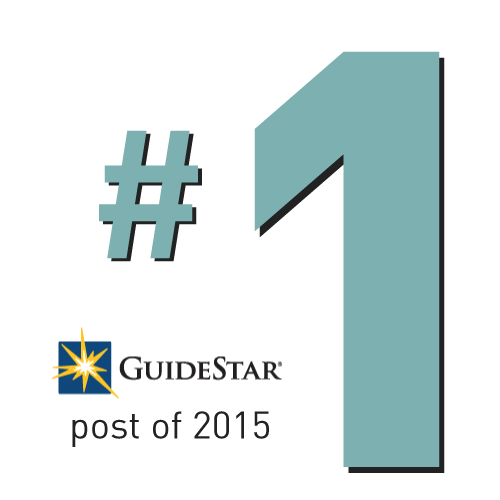 We’re proud to announce that our post on the 15% Overhead Myth was the #1 most popular post on Guidestar in 2015!
We’re proud to announce that our post on the 15% Overhead Myth was the #1 most popular post on Guidestar in 2015!
“Can we please stop the management consultants and charity evaluators of the world from poisoning the water with their mantra of 15% overhead? I know they mean well, but constantly harping on this 15% ideal is simplistic and is causing great harm to many wonderful, worthy organizations.
Without lots of background information, detailed financials, and an in-depth analysis of an organization, 15% overhead is meaningless. Donors will rarely have all that information – and generally don’t want to do that much analysis before making a gift.”
This blog from November covers the top 5 reasons why without lots of background information, detailed financials, and an in-depth analysis of an organization, 15% overhead is meaningless. You can read the full post here, and check out Guidestar’s full list of their top 10 posts of 2015 here.
We’ve also been featured on The Fundraising Authorities list of The Best Non-Profit Fundraising Blogs and Websites of 2016 by Joe Garecht. Joe says:

This completely unique site teaches non-profit fundraisers how to raise more money using their unique asking style. I always recommend that new fundraisers and board members take the site’s free Asking Styles Assessment.

Thanks Joe!
Joe Tumolo, President of Donor Centric Fundraising also put us on list of his Best Podcasts of 2015. Here’s what he has to say:

The “JOEY” for Straight Talk Goes To …Brian Saber of Asking Matters. In the third and final episode of my chat with Saber, we discuss HOW TO BE CLEAR WITH DONORS. The goal of every donor meeting is not the gift – the goal is to build the relationship.

Joe has the podcast available for listening and downloading – check it out here.
Thanks for the kind words everyone!
find us on social media
connect with asking matters on facebook, twitter, and linkedin for more fundraising advice, news, and important updates!
Start your free Asking Matters trial!
Sign up for a free 30-day trial of membership for more fundraising trainings, webinars, and a library of resources
I wish I could lay claim to “win the confidence, create the desire.” If this doesn’t sum up fundraising, what does?
In fact, “win the confidence, create the desire” is an old sales principle shared with me by Leo, a dear friend’s 93-year old dad. Leo was a door-to-door salesman and this was his guiding light. In his career he sold everything from bedding to bibles! Recently, I sat down to lunch with Leo, who was interested in hearing about Asking Matters. He was quick to draw important parallels between his sales work and fundraising. It got me thinking.
 Win the Confidence
Win the Confidence
It’s all about the relationship.
I’m constantly asked whether the asker needs to “tell the donor what the donor wants to hear.” Yes – that’s true. But what the donor wants to hear is you being your authentic self. When you’re authentic you’re compelling and you gain the donor’s trust. Hence, you build the relationship by winning the confidence!
It was no different for Leo, whose first job was to keep from having doors slammed in his face (makes fundraising sound easy!). How did he win the confidence of these strangers at their doorstep? Well, he didn’t start by trying to sell them. First he asked them questions about themselves and their needs, then he listened and learned.
Sounds a lot like us, right? We don’t ask until we learn something. Even if we’ve got only one shot, we start the meeting by asking questions and learning all we can. By listening and learning we win their trust and gain their confidence. Voila!
Create the Desire
Here I think Leo had it easy! I’ve always thought it would be amazing to have an actual product of monetary value to sell – something tangible to give in exchange for money.
As fundraisers we have to convince the “buyers” that the work our organizations do is something they value. We have to “create the desire” to give just as Leo had to “create the desire” to purchase. And we do that by talking about vision and impact.
In Leo’s case it was about how life would be better because of his products. Leo had to help customers visualize how beautiful their homes would be with his lovely drapes, or how spiritually enriched life would be with a new bible. It wasn’t about “need” – that would barely sell.
It’s not about “need” for us either. For us it’s about the impact a charitable gift can make and how enriched the donor will feel after making a gift. And in order to illustrate that impact, we need to talk about our organization’s vision for the future.
…and that brings us back to “win the confidence!” Who will buy our vision for the future without first having trust in us?
So simple. Thanks Leo!
find us on social media
connect with asking matters on facebook, twitter, and linkedin for more fundraising advice, news, and important updates!
Can we please stop the management consultants and charity evaluators of the world from poisoning the water with their mantra of 15% overhead? I know they mean well, but constantly harping on this 15% ideal is simplistic and is causing great harm to many wonderful, worthy organizations.
Without lots of background information, detailed financials, and an in-depth analysis of an organization, 15% overhead is meaningless. Donors will rarely have all that information – and generally don’t want to do that much analysis before making a gift.
In fact, GuideStar, BBB and Charity Navigator partnered in a campaign to end the Overhead Myth – the false conception that financial ratios are the sole indicator of nonprofit performance—by encouraging donors to focus on broader factors such as transparenc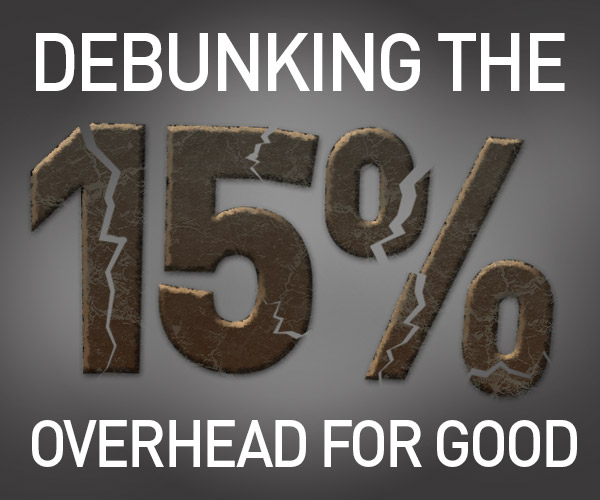 y, governance, leadership, and results, as well as finances.
y, governance, leadership, and results, as well as finances.
Here are my top five reasons why 15% might be meaningless:
#5 Organizations Account for Costs Differently
What’s overhead for one organization is a program cost for another. Plus, larger, more sophisticated organizations are more likely to have strategic business staff who know how to allocate costs more effectively among programs.
#4 Start-Up Programs and New Organizations Need to Invest in Infrastructure
Just getting a new program or organization operational can take a significant amount of investment, most of which would be called overhead. And a new program for a small organization will impact the overhead line much more than it will for a large one, which can sooner absorb those costs and might already have the economy of scale to run it.
#3 Some Programs are Simply More Costly to Run
Daycare, mental health, medical services, and other similar organizations require significant oversight, detailed accounting, and inventorying, and massive amounts of reporting. So a grant to run a mental health clinic will take much more staff time to manage than a grant to put on an art exhibition. Much of this becomes overhead, and will put the mental health organization at a disadvantage regardless of the quality of the program.
#2 Costs Vary Across the Country
Try running a theater company in New York City as opposed to Chicago (two cities I know well). It will cost significantly more to house the administrative staff in New York than in Chicago, and due to the high cost of housing in New York City salaries tend to be higher.
You need just as much administrative staff in both cities to run comparable organizations, so generally the overhead cost in New York City, all other things equal, will be higher.

#1 Overhead is Not an Indication of Impact
At the end of the day, the question is whether people and communities are being impacted. And that has only marginal relationship to overhead. There’s nothing to say that people are being impacted less when the overhead costs run to 20%. And just because overhead jumps one year due to some investment in infrastructure doesn’t mean less impact has been made. The organization is smartly planning for greater impact going forward.
So while analysis is important, and organizations should be transparent and accountable, there is no substitute for getting to know an organization personally, seeing programs in action and understanding the impact they’re making, and coming to believe in the staff and their ability to manage. Let’s help donors build stronger relationships with their charities and cast aside these generic litmus tests that don’t begin to honor the diversity and magnificence of our non-profit community.
find us on social media
connect with asking matters on facebook, twitter, and linkedin for more fundraising advice, news, and important updates!
Want more help with your board? Check out Fundraising 101 for Board members – there is still space available for next week’s sessions! This webinar is designed to give board members a fuller understanding of how they can best impact their organization and feel more empowered to go out and help.
For 15 years I’ve harbored a secret wish. My one wish for the non-profit world.
If I could snap my fingers I’d have every board member sit on one board only… and give 75% of his or her charitable gifts to that board. I can dream, can’t I?! Here’s why…
Board members would feel like investors.
 We talk about how to get our board members to feel truly vested in our organizations, yet how can they when their attention and their giving is so spread out? Imagine how much they’d care if they were putting almost all their charitable gifts in one place. They’d have a lot at stake.
We talk about how to get our board members to feel truly vested in our organizations, yet how can they when their attention and their giving is so spread out? Imagine how much they’d care if they were putting almost all their charitable gifts in one place. They’d have a lot at stake.
Board members could stop the painful quid-pro-quo fundraising.
What a gift that would be! I’ve never met a board member who likes all that quid-pro-quo fundraising – every gift to your organization means a gift he or she makes to someone else’s. And then your organization has all these gifts from people who don’t care…
The board would have incredibly synergy.
 Imagine how much time they could devote, and how hard they’d search for appropriate new resources. Everyone would sense the commitment of being fully vested. Imagine how rich the board discussions would be and how different their long-range views would be.
Imagine how much time they could devote, and how hard they’d search for appropriate new resources. Everyone would sense the commitment of being fully vested. Imagine how rich the board discussions would be and how different their long-range views would be.
It would make sense for staff to devote significant time to the board.
Boards take a tremendous amount of staff time no matter how you slice it. When board members only represent a small percentage of resources, how much time does it make strategic sense to devote? The fiduciary and leadership piece is very important, but that can often feel like a burden and get in the way of other important staff work (we’re being honest here!). If board members represent a significant share of the resources, the time spent becomes more valuable and strategic.
What do you think? Wouldn’t you like a board like that? Obviously it’s a dream, but short of that here are some steps to take:
- Be clear about your fundraising expectations in your board prospectus, job description and board policies. Organizations tend to be much clearer about other board duties and fudge these in the hopes of not scaring anyone off.
- Have a strong, board-led, individualized board solicitation process. Have each board member solicited one-on-one, by a leader of the board, for a personally significant gift.
- Don’t beg people who sit on numerous boards to sit on yours. If they’re loyalties are that divided and they’re doing you a favor by sitting on yours, you’ll never get anywhere. And it’s rare that someone sitting on a number of boards is truly inspired to be on yours as well.
- Convince your board leadership that those who have capacity and continue to not give personally significant gifts might be better suited to committee work, founders boards, etc.
At the end of the day, why would someone sit on your board and give their time to your organization, but give their money elsewhere? It would be like giving our time and efforts to our children put not investing our money in them.
Who would consider that?


 like us on facebook
like us on facebook follow us on twitter
follow us on twitter connect on linkedin
connect on linkedin
